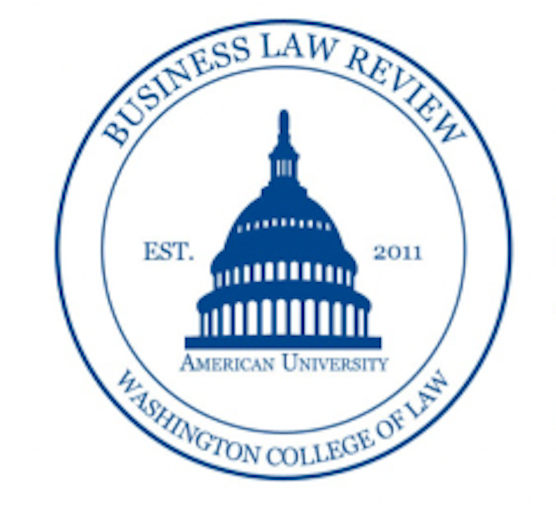
By: Carlos Micames
Environmental, social, and corporate governance (“ESG”) investing has quickly grown to become a staple of most corporations’ business strategy.[1] The ESG label represents the 3 factors in measuring the sustainability and ethical impact of a company.[2] For example, ESG Exchange-traded funds (“ETF”) tend to consist of companies that are environmentally friendly or concentrating their efforts in socially conscious issues like LGBT rights. Given the rising percentage of millennials beginning to invest in the market, companies are becoming increasingly focused on ESG investments to attract this new crowd of investors.[3] According to the Forum for Sustainable and Responsible Investment, ESG currently makes up 26% of actively managed assets in the US.[4] Further, a Bank of America survey showed that 63% of high-net-worth investors aged 39-54, known as Generation X, analyzed their portfolios in 2018 for ESG investments in 2018.[5] Seeing this trend, it is no surprise that companies are quickly jumping on the ESG bandwagon to attract new investors and please their existing investors.[6] As such, it is important to analyze the impact that ESG investment can have on the fiduciary duty of the corporation to its shareholders.
A fiduciary duty is an obligation to act in the best interests of another; in the case of a corporation, the obligation is to its shareholders.[7] Directors that fail to comply with their fiduciary duty are subject to derivative lawsuits by shareholders.[8] Examples of failure to comply with the fiduciary duty include: excessive director/officer compensation, investing in a new product likely to fail, and organizing a merger with a business for personal interest over the business’s interest.[9] With ESG investors making up a higher percentage of company shareholders, will the fiduciary duty be modified so that directors and officers will have to incorporate socially conscious principles as part of their business decisions?
Companies such as Adidas and Nestle have already adopted ESG principles into their business practices.[10] Adidas has taken steps to prepare more environmentally-friendly sourcing practices and by reducing their use of plastic in packaging.[11] The sports apparel giant also produced over 5 million shoes from recycled plastic waste in 2018.[12] Nestle has also focused on sustainable methods in agricultural development and food production to reduce the impact conventional agricultural practices have on climate change.[13] In fact, even Goldman Sachs has taken a stance on socially responsible investing (SRI) by investing in sustainable energy and recognizing that future clients will be more likely to focus on SRI than their more traditional profit-orientated predecessors.[14] A recent statement signed by 181 CEOs of the Business Roundtable committing to shift the focus from shareholder profit to stakeholder benefit also foreshadows a movement toward a new generation of investors.[15]
There are numerous indexes such as the Dow Jones Sustainability Index, the Socially Responsible Investing (SRI) Index, and the MSCI Global Sustainability Index, among many others that assist investors in locating ESG companies for their portfolio.[16] Investors can use these indexes to analyze the ESG ranking of specific companies prior to investing in them. A higher score is better for these companies because it attracts a diverse group of investors and can also provide them with additional positive publicity.[17] Further, companies with high ESG scores can also win entry into socially responsible ETF funds.[18] Such funds have a record of providing greater investor return for a similar cost as compared to their benchmark indices.[19]
The Department of Labor (“DOL”) issued a series of bulletins in 2018 on how fiduciaries should apply ESG factors in investment decisions.[20] The DOL concluded that while fiduciaries can use ESG factors, the primary focus should be on economic interest.[21] The DOL’s report centered around ERISA fiduciaries and the role money managers have in managing retirement assets.[22] Accordingly, the DOL concluded that ESG factors did not modify the fiduciary duty with respect to ERISA fiduciaries.[23]
On the other side, the Stanford Law Review published an article in 2018 titled Reconciling Fiduciary Duty and Social Conscience: The Law and Economics of ESG Investing by a Trustee, that focused on risk-return ESG and how fiduciaries of a private trust, pension, or charitable endowment can integrate risk-adjusted ESG principles.[24] The article expands on DOL’s analysis to explain how fiduciaries can use ESG factors to determine the risk-adjusted financial value of securities, including whether to support a finding that the security is undervalued or overvalued with respect to its socially conscious label.[25] For example, ESG factors might indicate to the fiduciary that an oil company is overvalued because the externalities produced by their CO2 emissions or lack of energy diversification in response to a changing economic landscape has not been priced in the stock value. Conversely, a fiduciary could find that an apparel company with a low ESG score is undervalued if it has nevertheless produced consistently solid earnings growth over time.
Therefore, a risk-adjusted ESG analysis can provide
a greater overview of a security’s intrinsic value, assisting fiduciaries in
complying with their duty to investors.[26]
As such, ESG factors are not necessarily inconsistent with the fiduciary duty
to investors. While it is unlikely that the fiduciary duty will be amended to
reflect a required analysis of ESG factors, their role will still be
consequential as a new generation of investors seek to put their money to work
and as ESG securities continue to produce improved risk-adjusted returns.
Additionally, if capitalism continues to move toward the “stakeholder
benefit” business model proposed by the Business Roundtable, green
investors may end up forging a path for the arrival of green fiduciaries.
[1] See John Divine, 7 of the Best Socially Responsible Funds, US News (Feb. 15, 2019), https://money.usnews.com/investing/slideshows/7-of-the-best-socially-responsible-funds; Rory Sullivan, et al., Fiduciary Duty in the 21st Century, UNEPFI (Sep. 2015), https://www.unepfi.org/fileadmin/documents/fiduciary_duty_21st_century.pdf; SRI Basics, https://www.ussif.org/sribasics (last visited Nov. 5, 2019).
[2] See Rory Sullivan, et al., Fiduciary Duty in the 21st Century, UNEPFI (Sep. 2015), https://www.unepfi.org/fileadmin/documents/fiduciary_duty_21st_century.pdf.
[3] Dieter Holger, What Generation Is Leading the Way in ESG Investing? You’ll Be Surprised., Wall St. J. (Sep.10, 2019), https://www.wsj.com/articles/what-generation-is-leading-the-way-in-esg-investing-youll-be-surprised-11568167440.
[4] See id.; SRI Basics, https://www.ussif.org/sribasics (last visited Nov. 5, 2019).
[5] See Holger supra note, 3; 2018 U.S. Trust Insights on Wealth and Worth, Bank of America, 1, 4 (Jun. 2018), https://newsroom.bankofamerica.com/system/files/2018_US_Trust_Insights_on_Wealth_and_Worth_Overview.pdf.
[6] Global Sustainable Investment Alliance, 2018 Global Sustainable Investment Review, 1, 4 (Jun. 2019), https://www.gsi-alliance.org/wp-content/uploads/2019/06/GSIR_Review2018F.pdf (stating that US ESG assets under management grew from $8.7 trillion in 2017 to $12 trillion in 2018, representing 26% of all assets under management in the US).
[7] Committee on Corporate Laws, ABA Section of Business Law, Corporate Director’s Guidebook, Fifth Edition, 62 Bus. L. 1479, 1500 (2007) (stating that members on a corporate Board of Directors are fiduciaries to their shareholders).
[8] See id.
[9] See Fiduciary Responsibility and Corporations, Nolo (last visited on Nov. 7 2019), https://www.nolo.com/legal-encyclopedia/fiduciary-responsibility-corporations.html; Adam Barone, What are some Examples of Fiduciary Duty?, Investopedia (Sep. 11, 2019), https://www.investopedia.com/ask/answers/042915/what-are-some-examples-fiduciary-duty.asp.
[10] See Awards and Recognitions, Adidas (Sep. 2019), https://www.adidas-group.com/en/sustainability/managing-sustainability/awards-recognition/; Creating Shared Value Report, Nestle (2018), file:///C:/Users/Carlitos/Downloads/creating-shared-value-report-2018-en.pdf.
[11] Awards and Recognitions, Adidas (Sep. 2019), https://www.adidas-group.com/en/sustainability/managing-sustainability/awards-recognition/.
[12] Id.
[13] The Nestle Sustainability Review, Nestle (May 2002), https://www.nestle.com/sites/default/files/asset-library/documents/reports/csv%20reports/environmental%20sustainability/sustainability_review_english.pdf.
[14] See 2018 Sustainability Report: Capital with Purpose- the Future of Sustainable Finance, Goldman Sachs (2018), https://www.goldmansachs.com/citizenship/sustainability-reporting/report.pdf.
[15] Statement on the Purpose of a Corporation, Business Roundtable (Aug. 19, 2019), https://opportunity.businessroundtable.org/wp-content/uploads/2019/09/BRT-Statement-on-the-Purpose-of-a-Corporation-with-Signatures-1.pdf.
[16] John Divine, 7 of the Best Socially Responsible Funds, US News (Feb. 15, 2019), https://money.usnews.com/investing/slideshows/7-of-the-best-socially-responsible-funds.
[17] What is Sustainable Investing, Blackrock (2019), https://www.ishares.com/us/strategies/sustainable-investing.
[18] See id.
[19] Lisa Woll, Critics of ESG Funds Are Wrong — Sustainable Investing Delivers Competitive Returns, MarketWatch (Jul. 19, 2017), https://www.marketwatch.com/story/critics-of-esg-funds-are-wrong-sustainable-investing-delivers-competitive-returns-2019-07-17.
[20] Memorandum from John J. Canary to Regional Directors , (Apr. 23, 2018), https://www.dol.gov/agencies/ebsa/employers-and-advisers/guidance/field-assistance-bulletins/2018-01.
[21] See id.
[22] See id.
[23] See id.
[24] See Max M. Schanzenbach, Reconciling Fiduciary Duty and Social Conscience: The Law and Economics of ESG Investing by a Trustee, Robert H. Sitkof, 72 Stan. L.Rev. __ (2020).
[25] Compare Canary supra note, 19 (recognizing that incorporating ESG factors into the fiduciary duty could present an economic risk to the investor portfolio); with Scanzenbach, supra note 24 at 32-33 (arguing against the DOL’s analysis by recommending that the portfolio manager implement a risk-return strategy for ESG investments) .
[26] See Schanzenbach, supra note 24.


